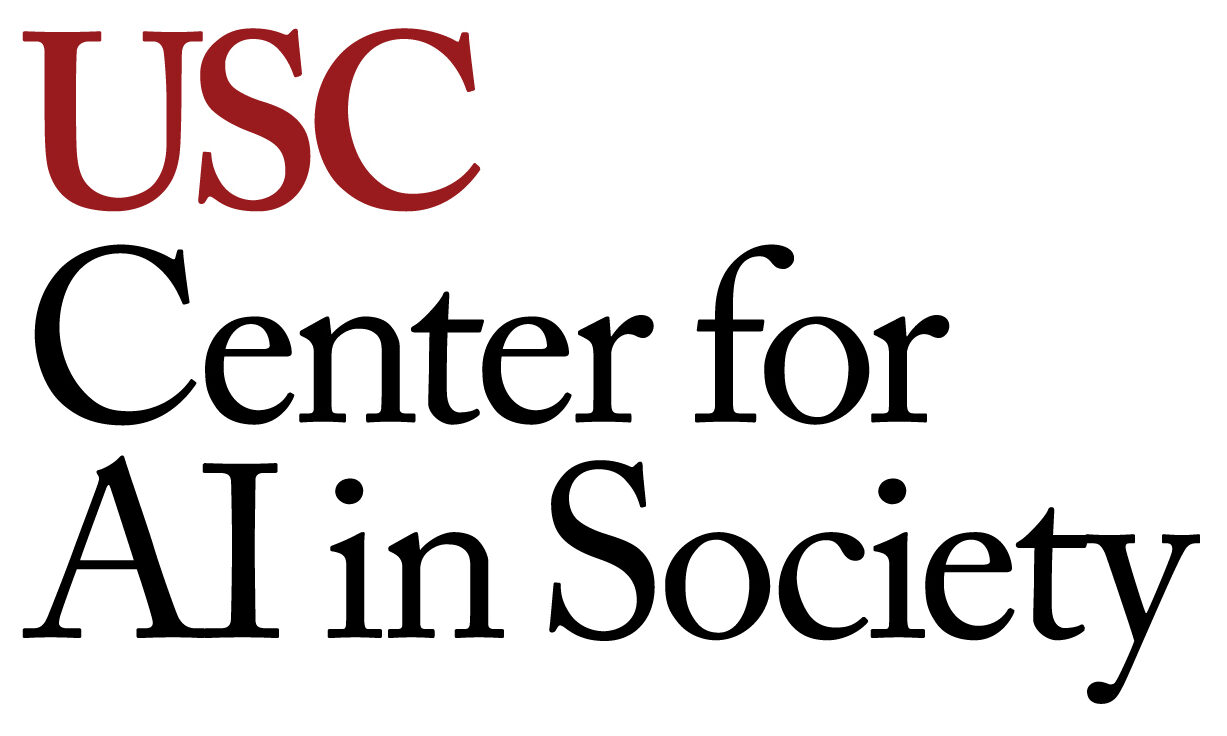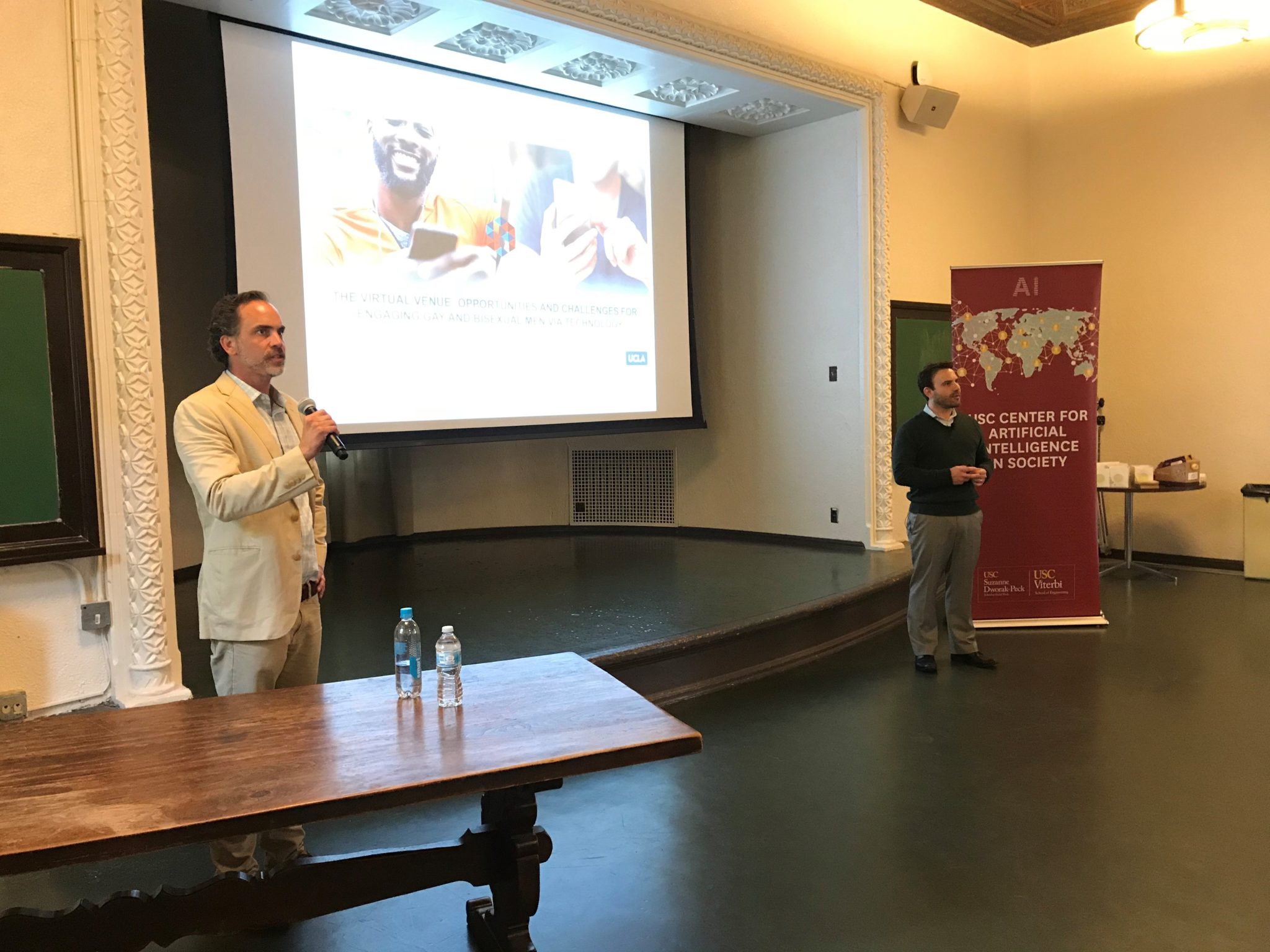
USC CAIS Co-Director Dr. Eric Rice introducing Dr. Ian Holloway.
Dr. Holloway is an Assistant Professor in the Department of Social Welfare at the UCLA Luskin School of Public Affairs and the Director of the Southern California HIV/AIDS Policy Research Center. Dr. Holloway earned his PhD in Social Work here at the University of Southern California. He returned to present his work utilizing technology to recruit and engage with gay and bisexual men who have sex with men. He began his talk by highlighting existing research on the state of technology use, particularly that of virtual venues like dating apps, and their relation to both health outcomes and study recruitment. Dr. Holloway went on to describe two of his ongoing studies using technology to engage with gay and bisexual men, LINX LA and GSNAP. Finally, Dr. Holloway discussed opportunities, challenges, and future research directions for researchers and service providers working to improve health outcomes for gay and bisexual men who have sex with men.
Presenting some of his completed research, Dr. Holloway noted that gay and bisexual men have moved online to socialize, and utilize both general social networking platforms like Facebook, but also gay-specific dating apps and websites like Grindr. Dr. Holloway found that gay and bisexual men were using Grindr and Facebook in sometimes different ways, or for different things. For example, when analyzing the profile pictures of men on both Facebook and Grindr, Grindr profiles were less likely to show a user’s face, and more likely to show potentially sexual material like naked chest or abs. Participants in this study were more likely to report using Grindr for making new friends, meeting people to hook up with, meeting people to date, alleviate boredom, connect to the gay community, and find people to drink and use drugs with. Facebook was more frequently used to communicate with face-to-face friends and connect with people from the user’s past. Dr. Holloway also collected data comparing Grindr use to other dating websites. Relative to dating sites, users were more likely to use Grindr to make new friends, alleviate boredom, connect to the gay community, and communicate with face-to-face friends.
New studies
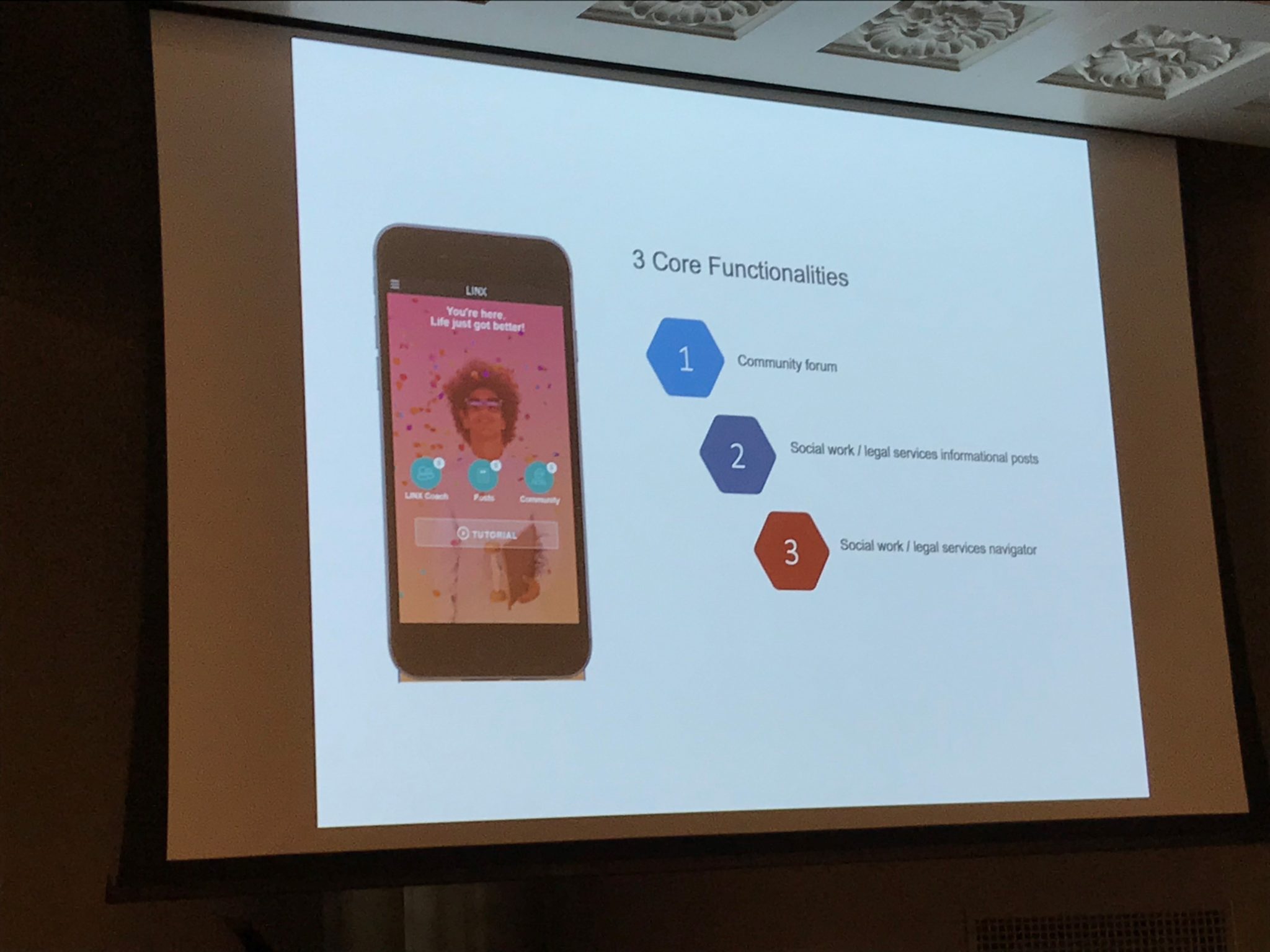
Dr. Holloway went on to describe his LINX LA study, designed to develop and test a social work and legal case management app for HIV-positive African American young men who have sex with men in Los Angeles County. Dr. Holloway designed the LINX LA HIV intervention based on exploratory work with HIV-positive African American young men. He found that black, gay young men reported hostility within the gay community, on dating websites, which is especially concerning because discrimination from other gay and bisexual men is more harmful than discrimination from heterosexual people. Men in his exploratory work supported the idea of a health promotion app specific to HIV-positive, African American, young gay and bisexual men. They reasoned that there would be less discrimination in an exclusive app for their population. The app is currently being developed through an iterative process of design and feedback, and a trial is planned to determine if a LINX coach (which can directly and individually link a user to appropriate services) provides additional benefit to the community forum, social work and legal services informational posts, and social work and legal services navigator, also within the app.
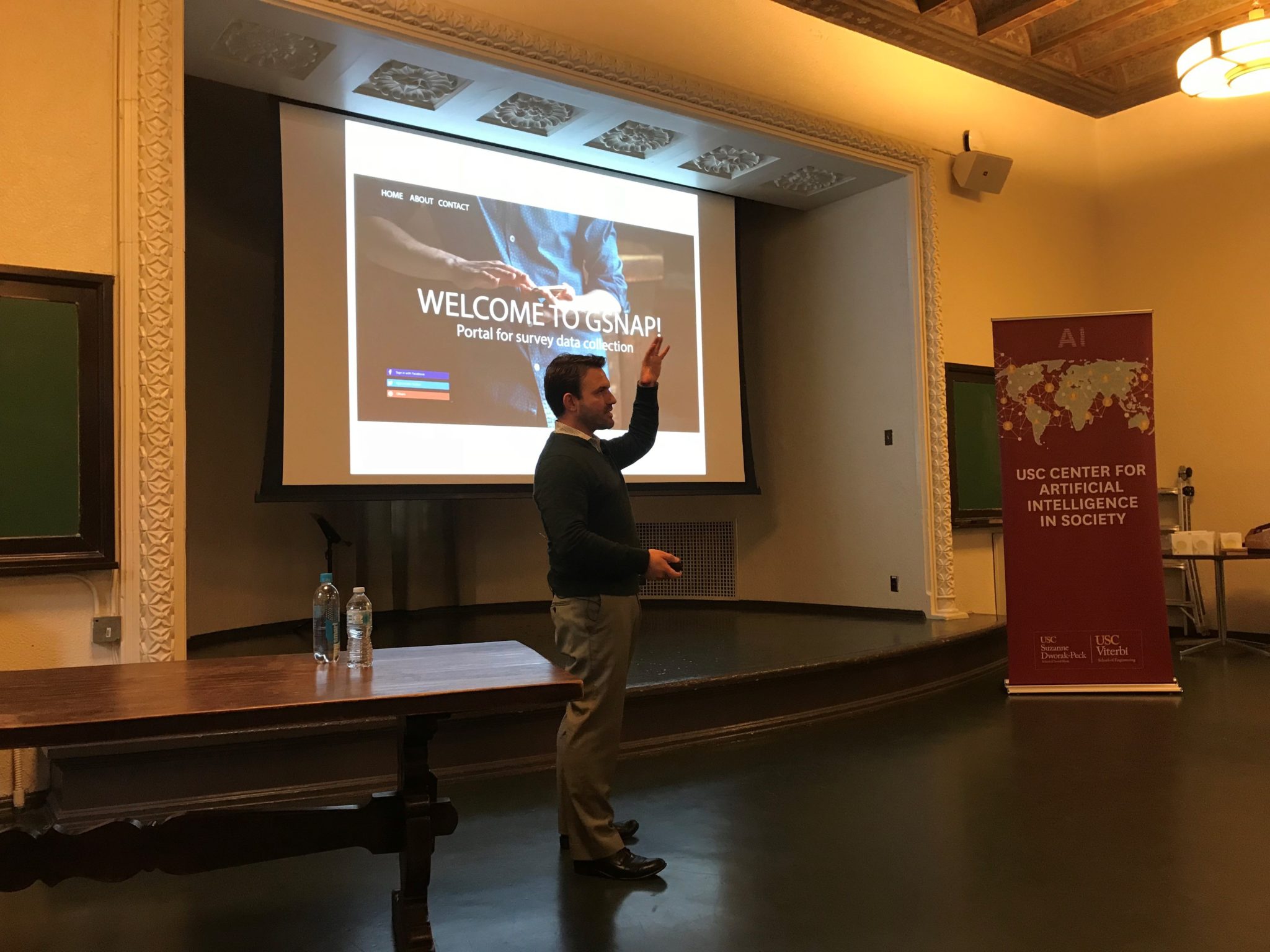
The final project that Dr. Holloway presented on was his GSNAP study, which stands for Gay Social Networking Analysis Program. That study aims to develop and test a data collection mining module (DCMM) to examine social network service usage patterns of gay and bisexual men, and how those patterns relate to substance use and HIV risk/protective behaviors. He also plans to determine the cost effectiveness of using such a program to make an intervention which could respond “just-in-time” with information and resources depending on a user’s social network usage patterns. Dr. Holloway and his research team interviewed 24 users, which afforded information on what services/sites were most frequently used, and how users were talking about drug use and sexual activities on the sites. This allowed Dr. Holloway and his team to create a dictionary with 302 text search terms and 21 special characters for later data mining. GSNAP addresses a major concern of previous research studies which relied on self-report of behaviors by study participants. A DCMM will allow for objective collection of data, which could be automatically analyzed to trigger responses by social workers or other health providers.
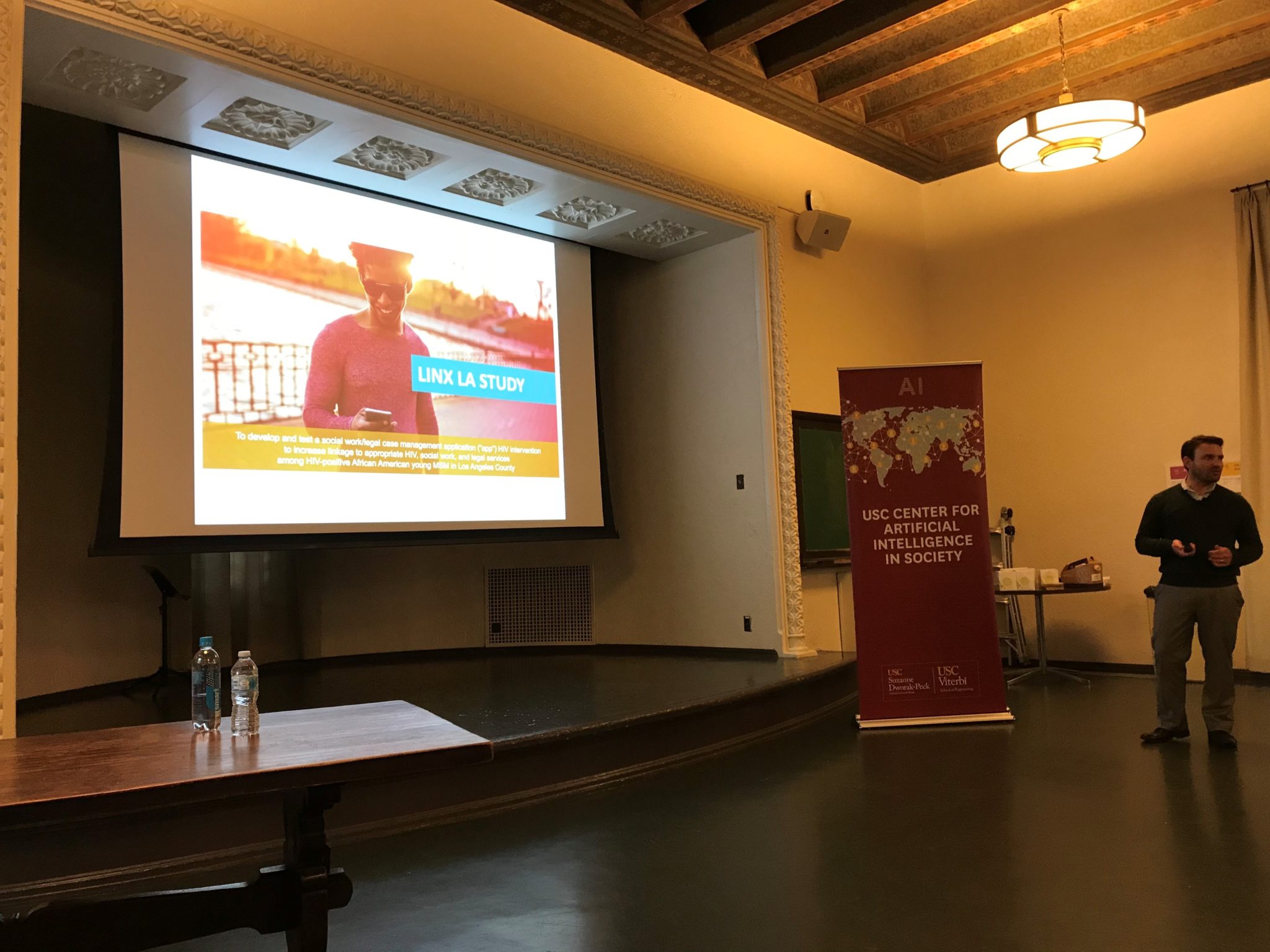
Dr. Holloway presenting on his LINX LA study.
Dr. Holloway noted that these shifts in venue, from bars and other brick-and-mortar locations to virtual spaces have made recruitment and retention of gay and bisexual men easier, especially in areas outside of urban settings, or even in countries with laws preventing homosexual activity. GPS in devices provide additional data for analysis and corroboration of offline behaviors. However, these gains do not come without additional risks, three of which are: 1) user privacy and confidentiality, 2) researchers may not be able to rely on the support of tech companies if they are not willing to partner on these projects, and 3) technology changes so rapidly that traditional research structures might not be able to keep up. Even so, many interesting opportunities remain, including harnessing the overlap of in-person and virtual spaces for men who have sex with men. Dr. Holloway ended by noting some additional technology features that can be employed to enhance programs designed to improve the health and wellbeing of gay and bisexual men, including geofencing to trigger alerts or link users to nearby resources, sensor technology, gamification to encourage protective behaviors and engagement, and virtual reality.


